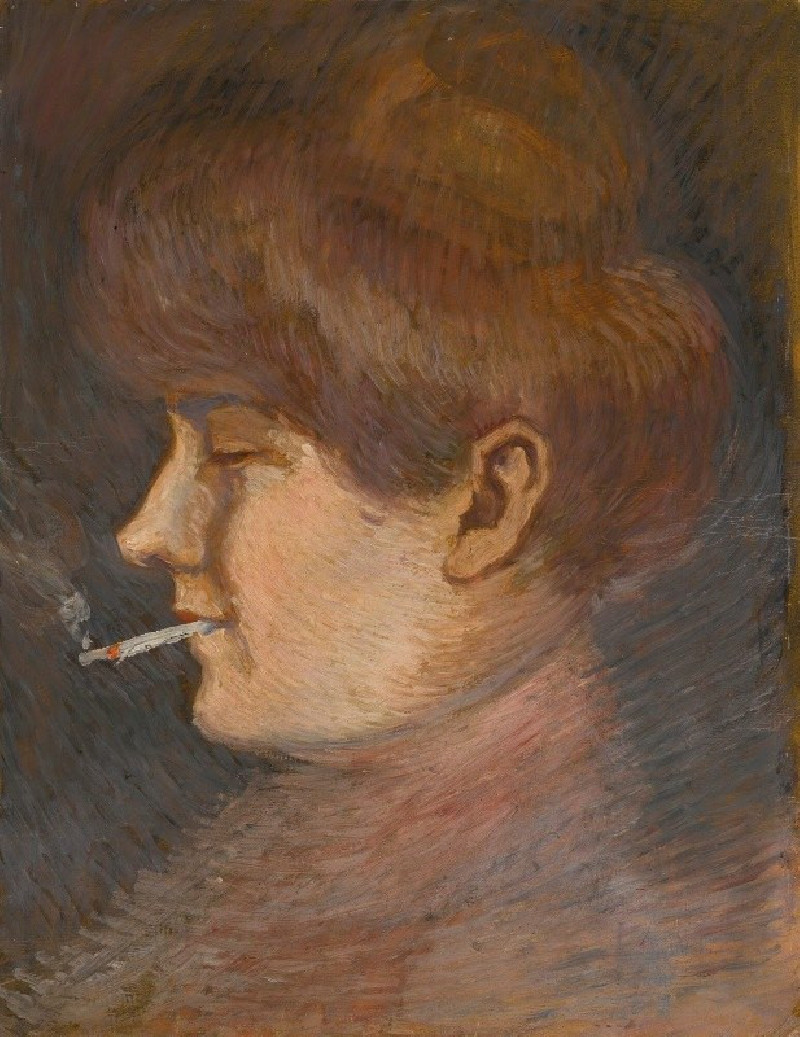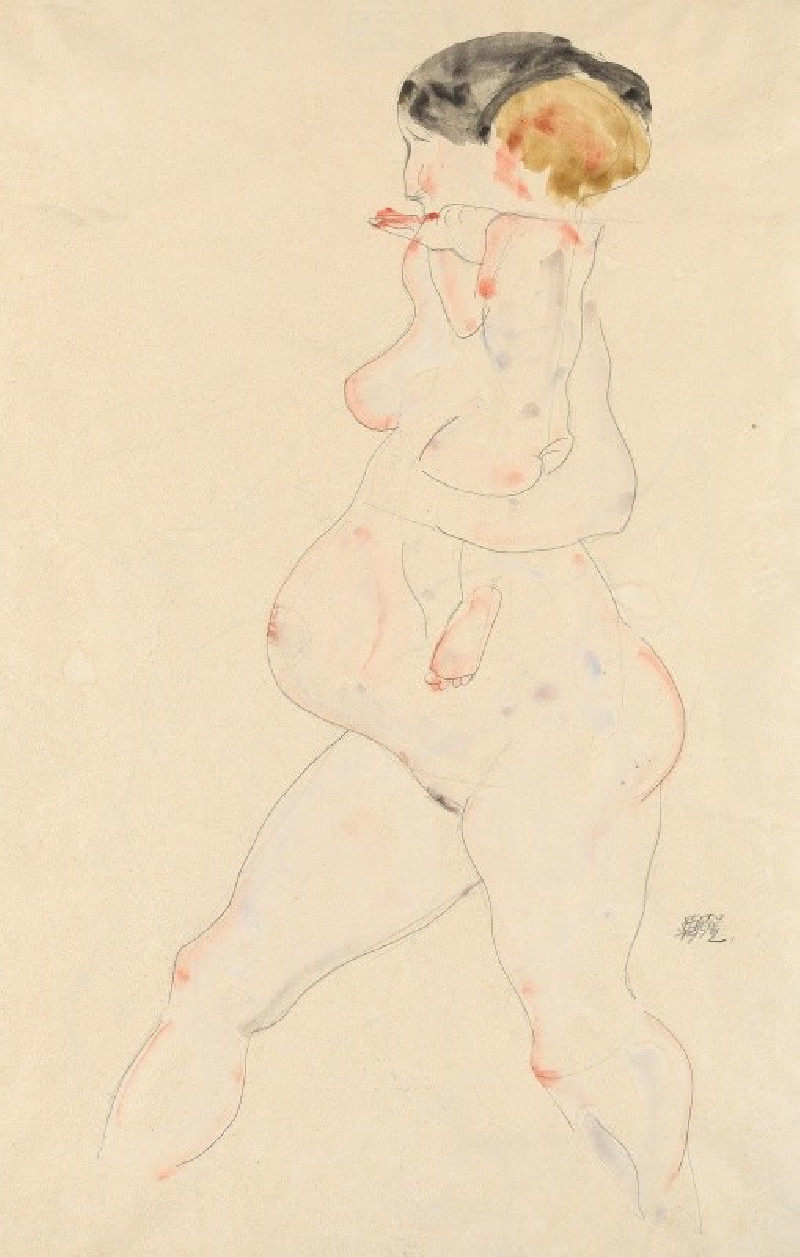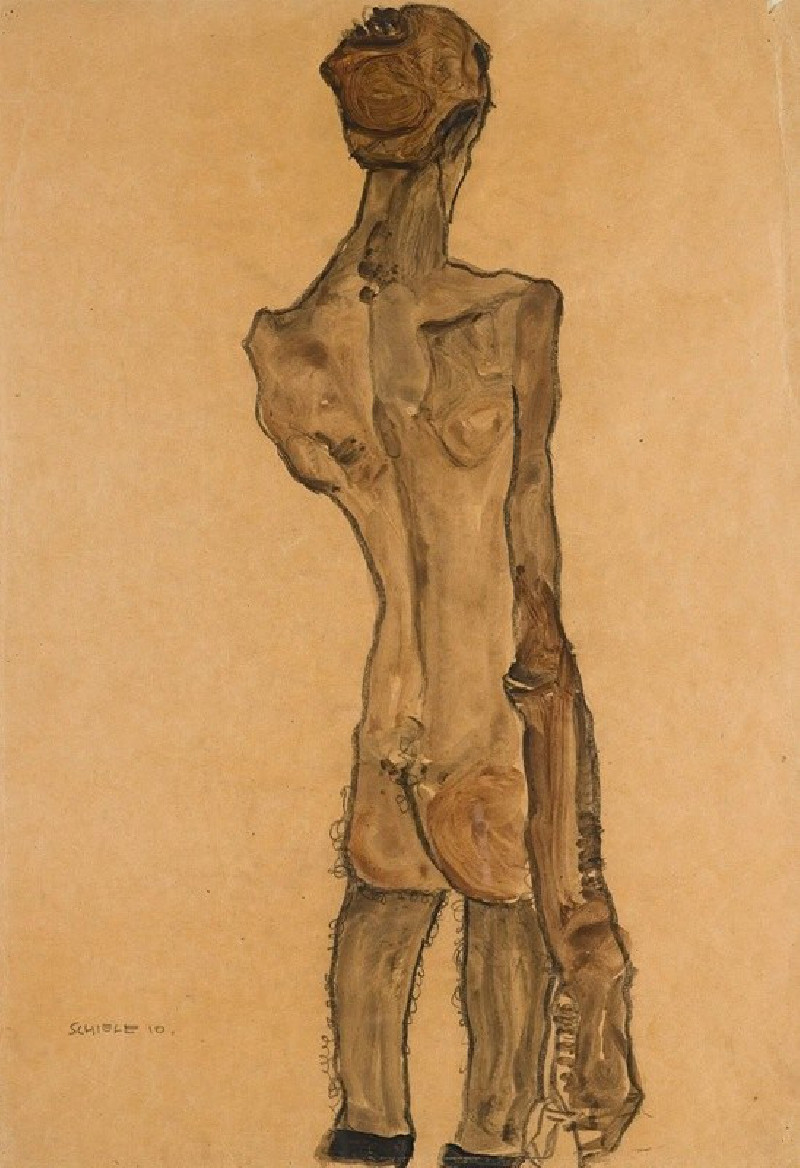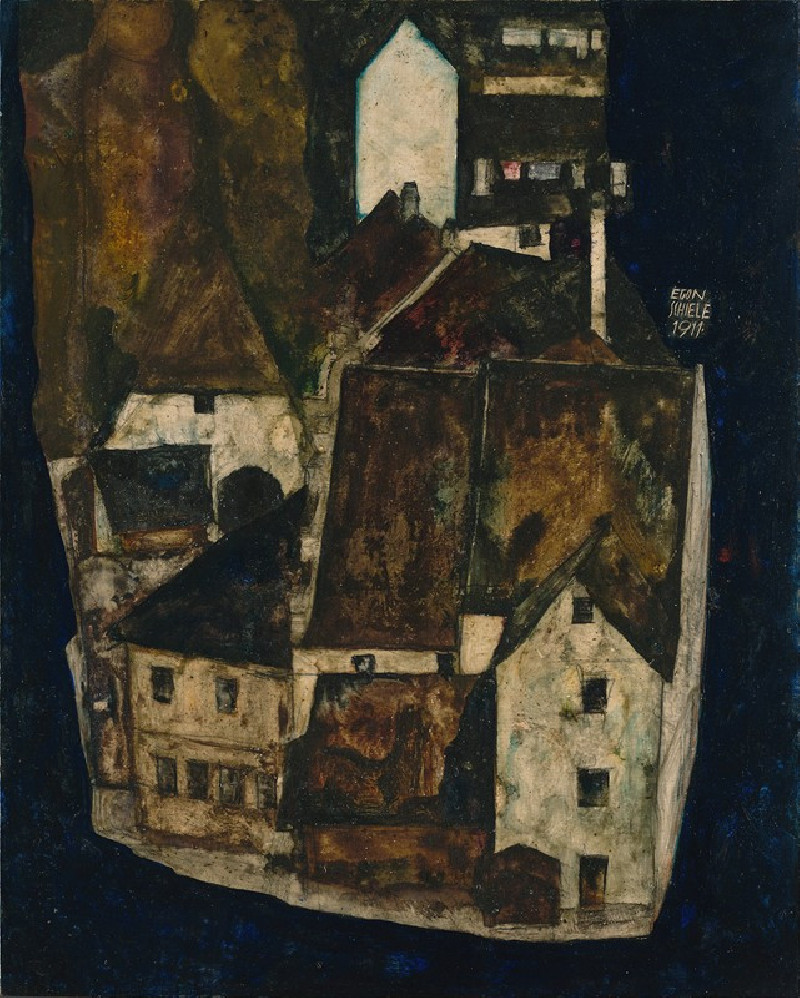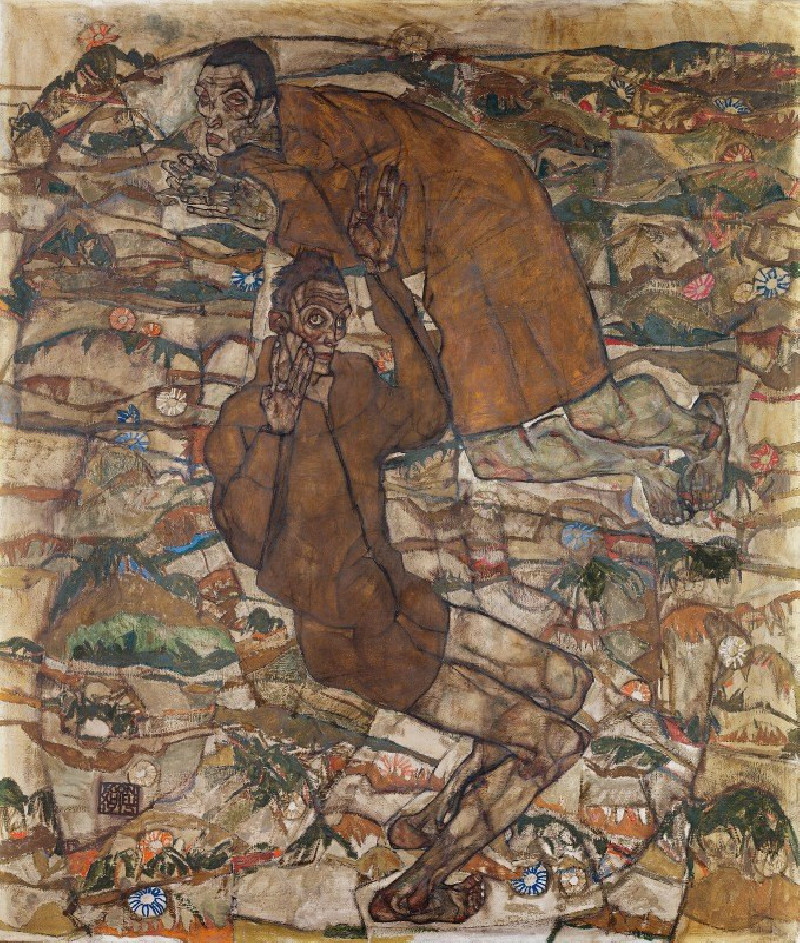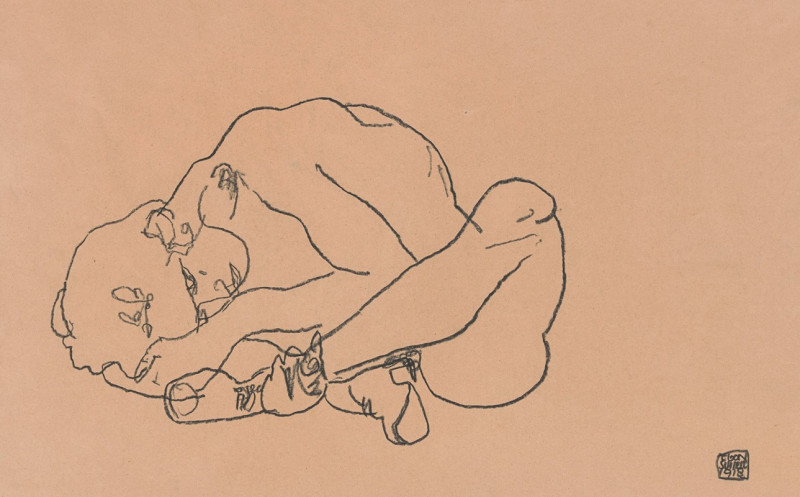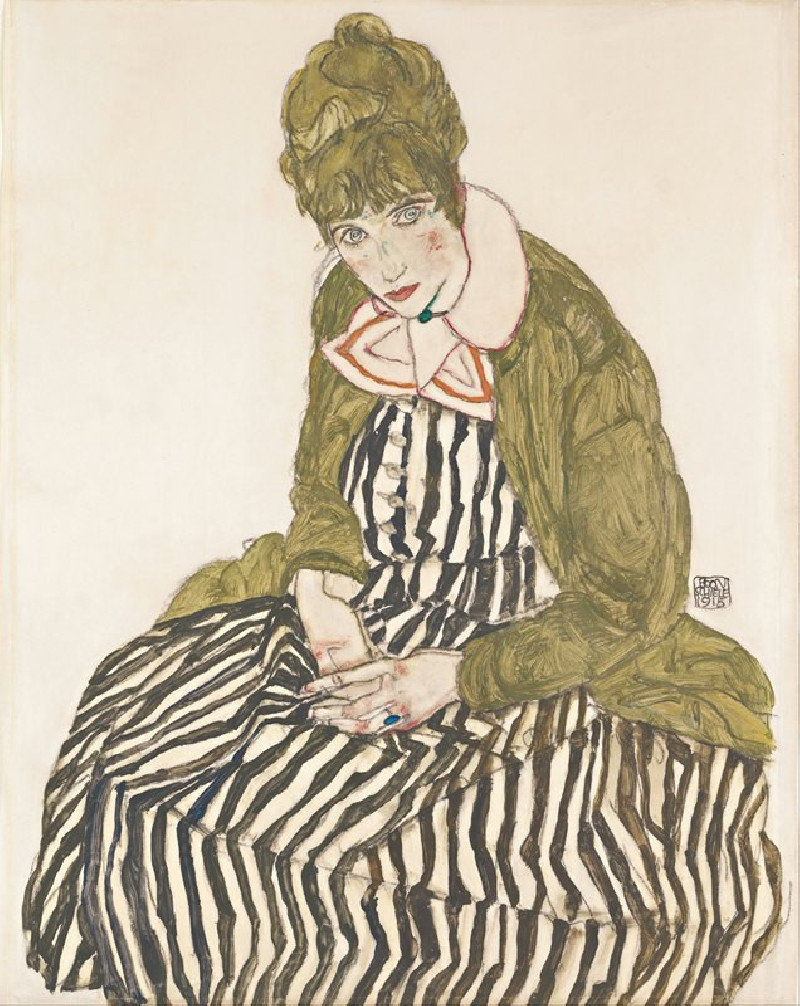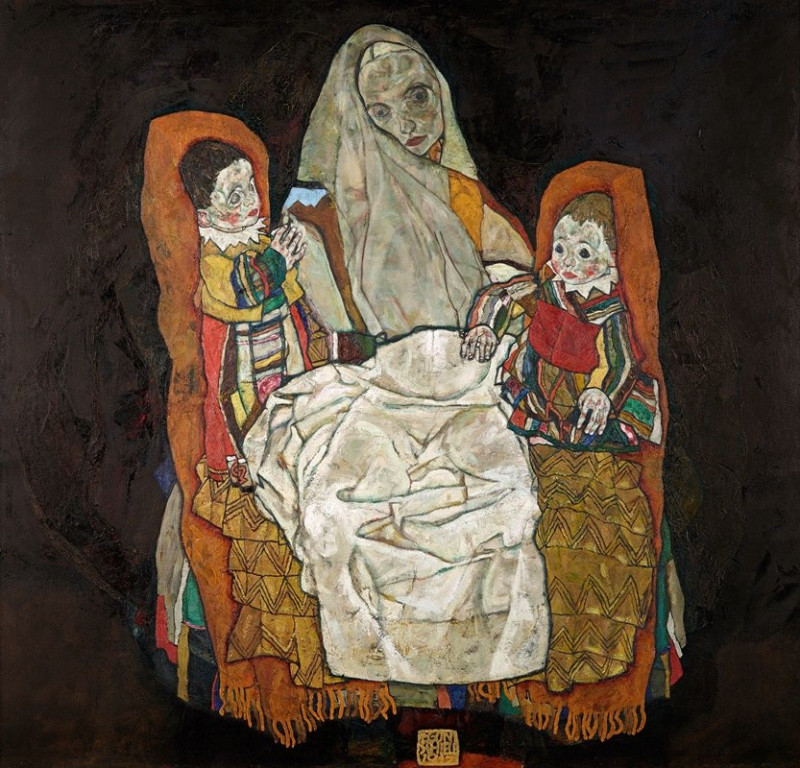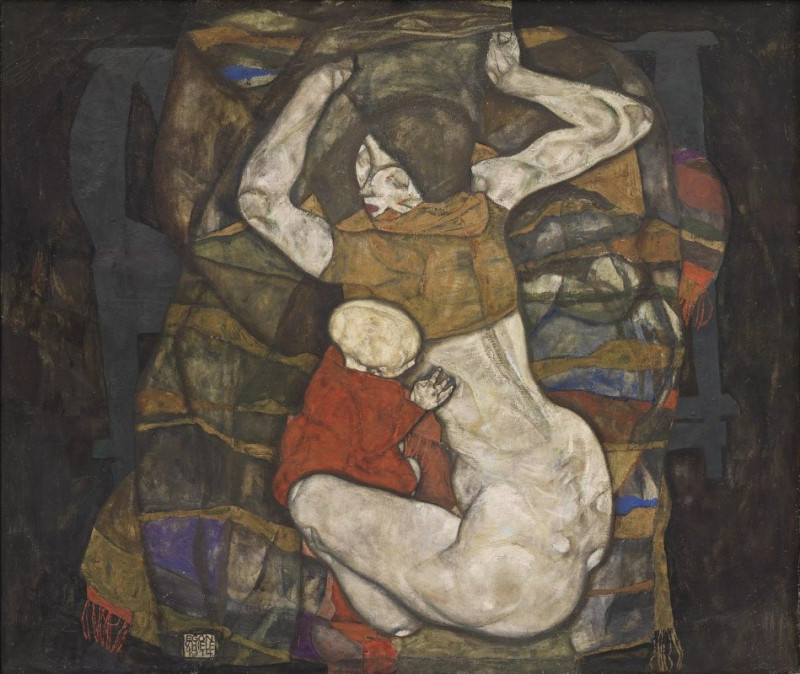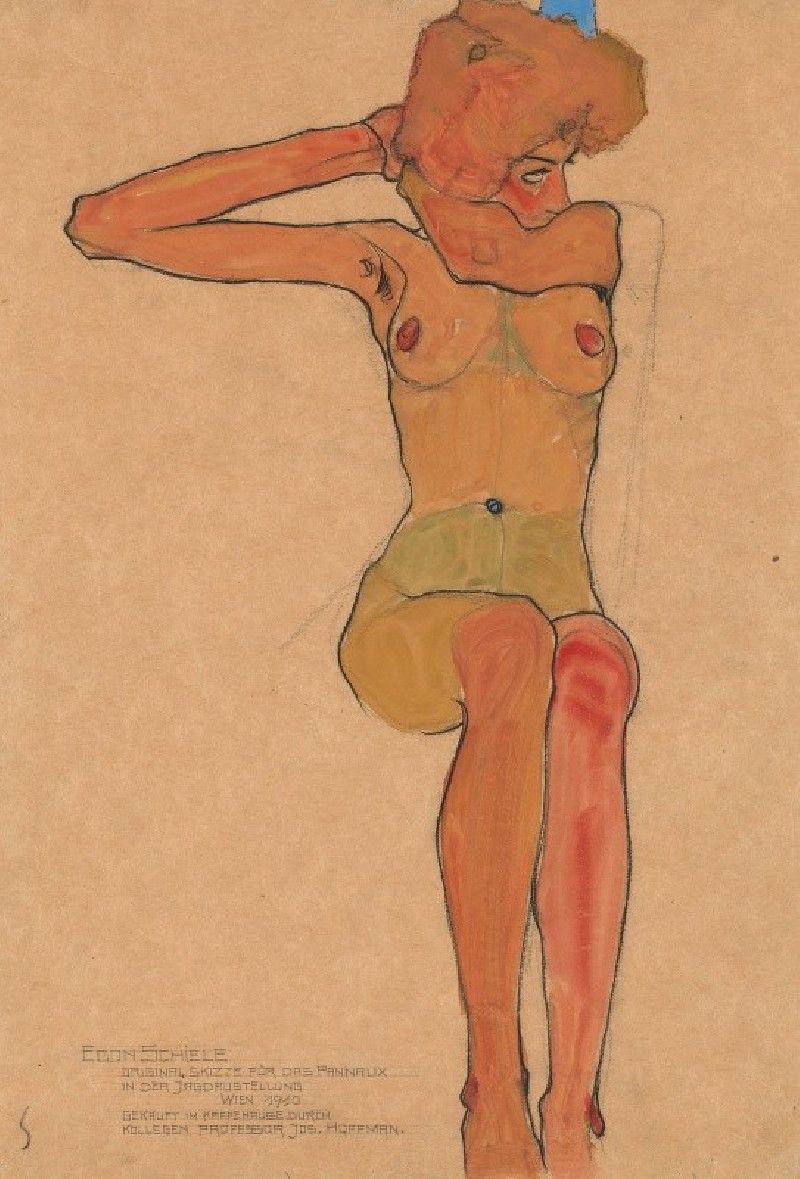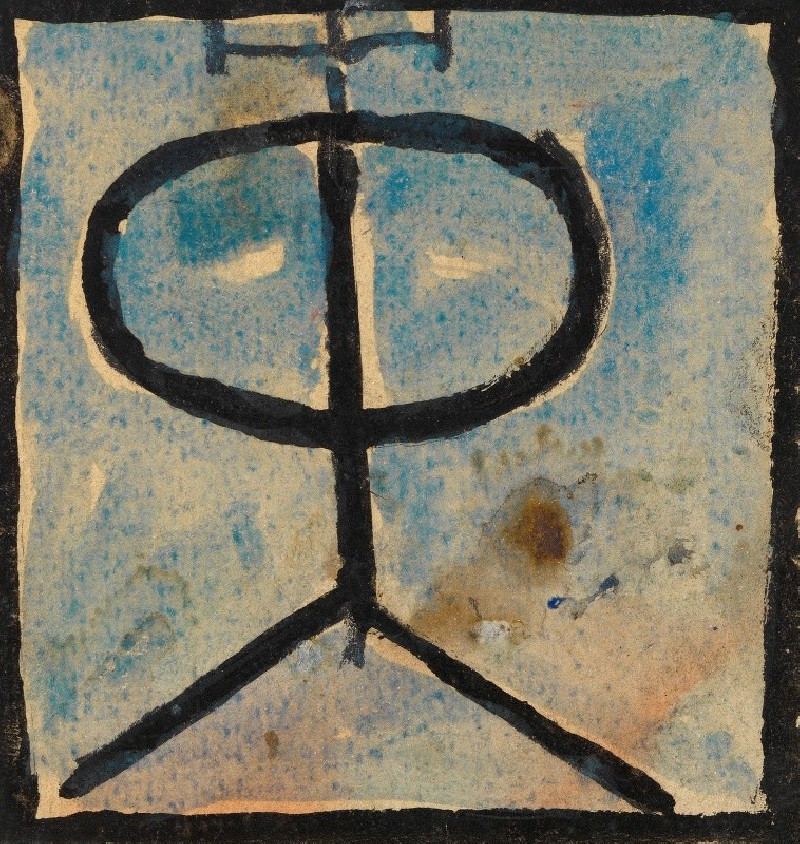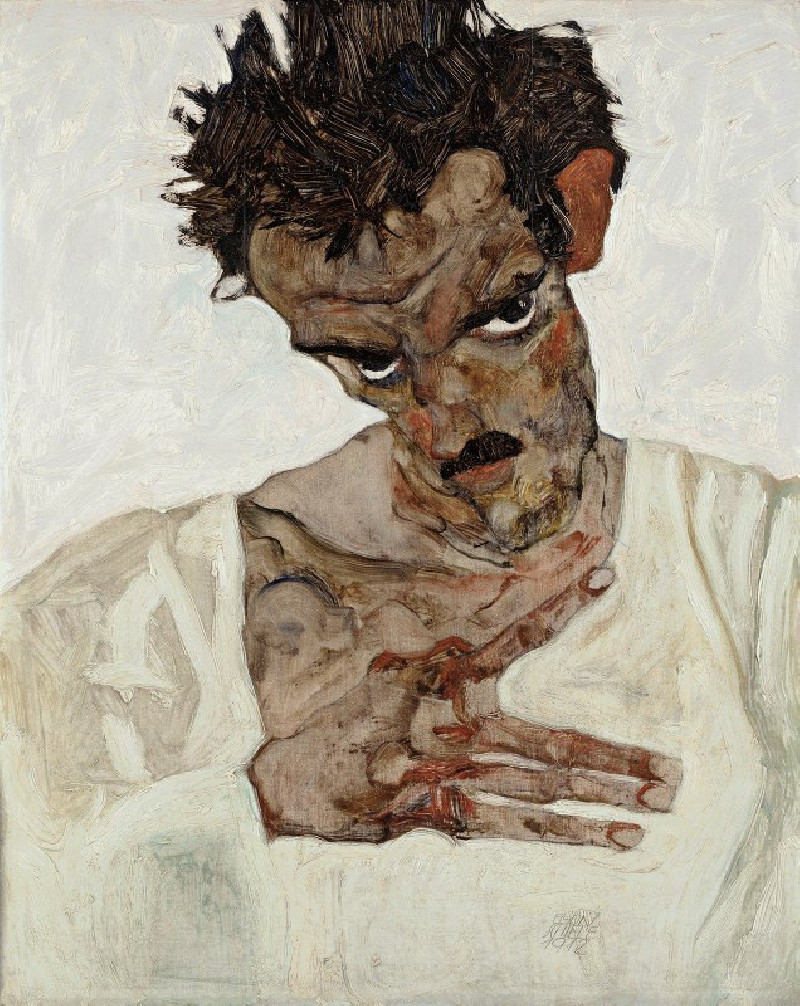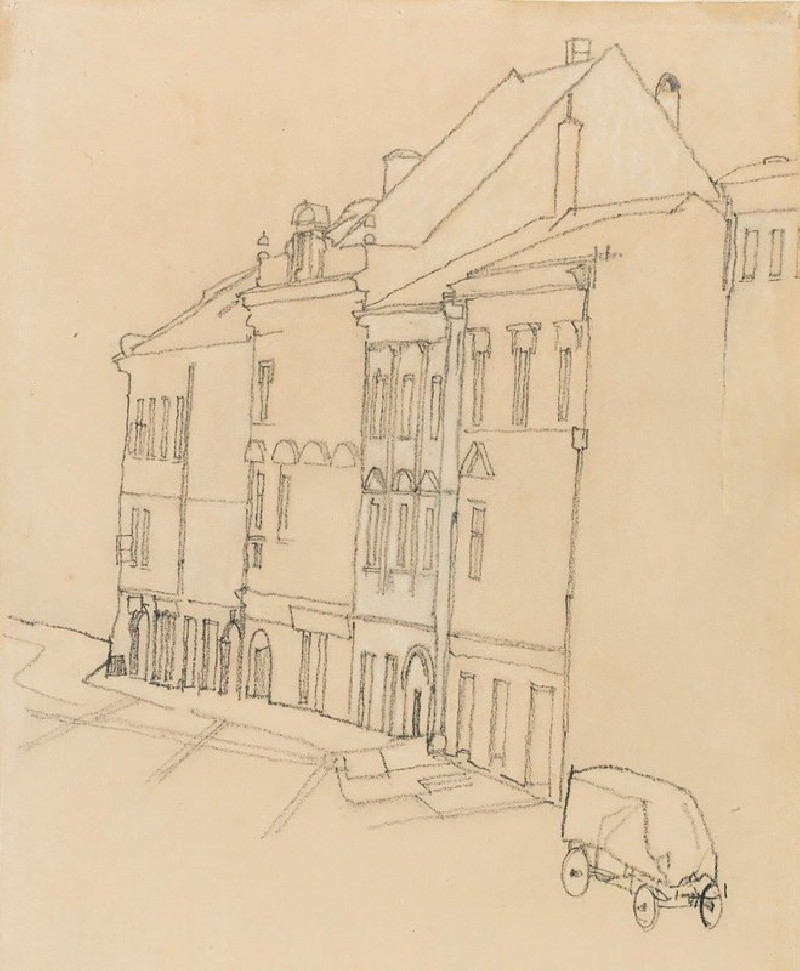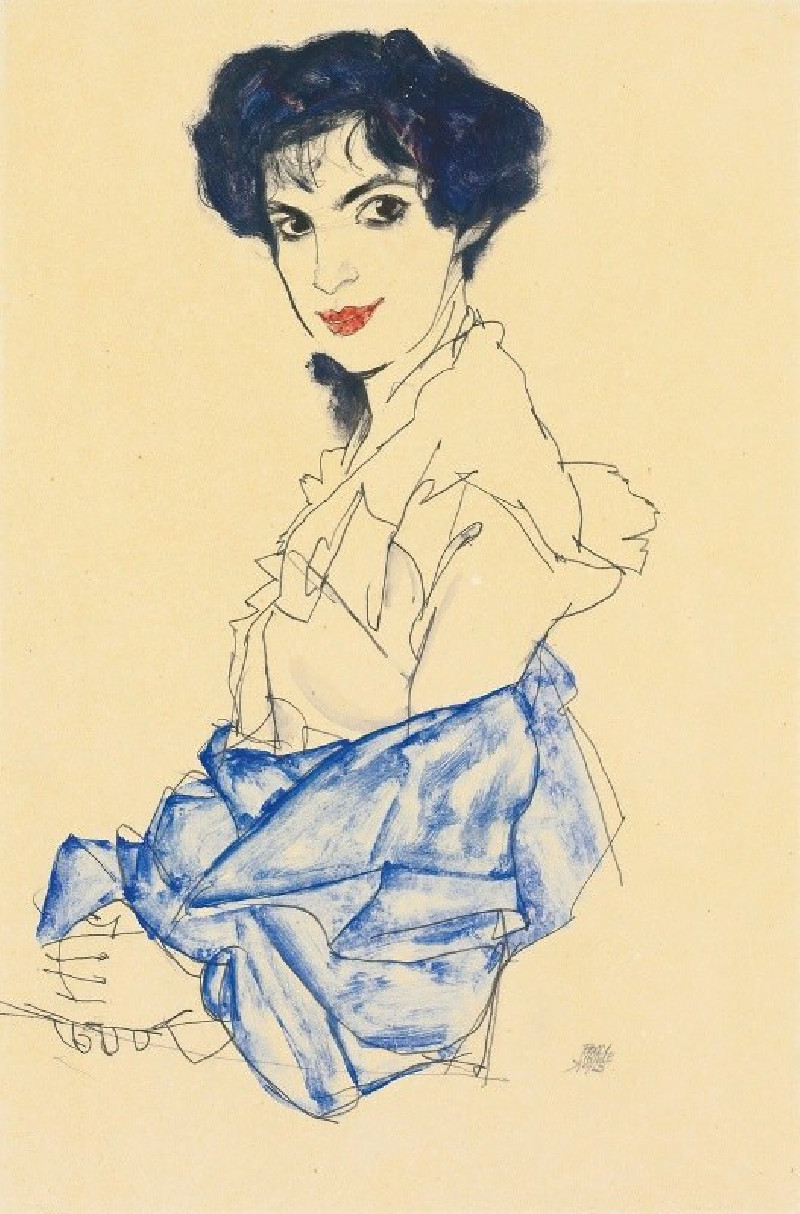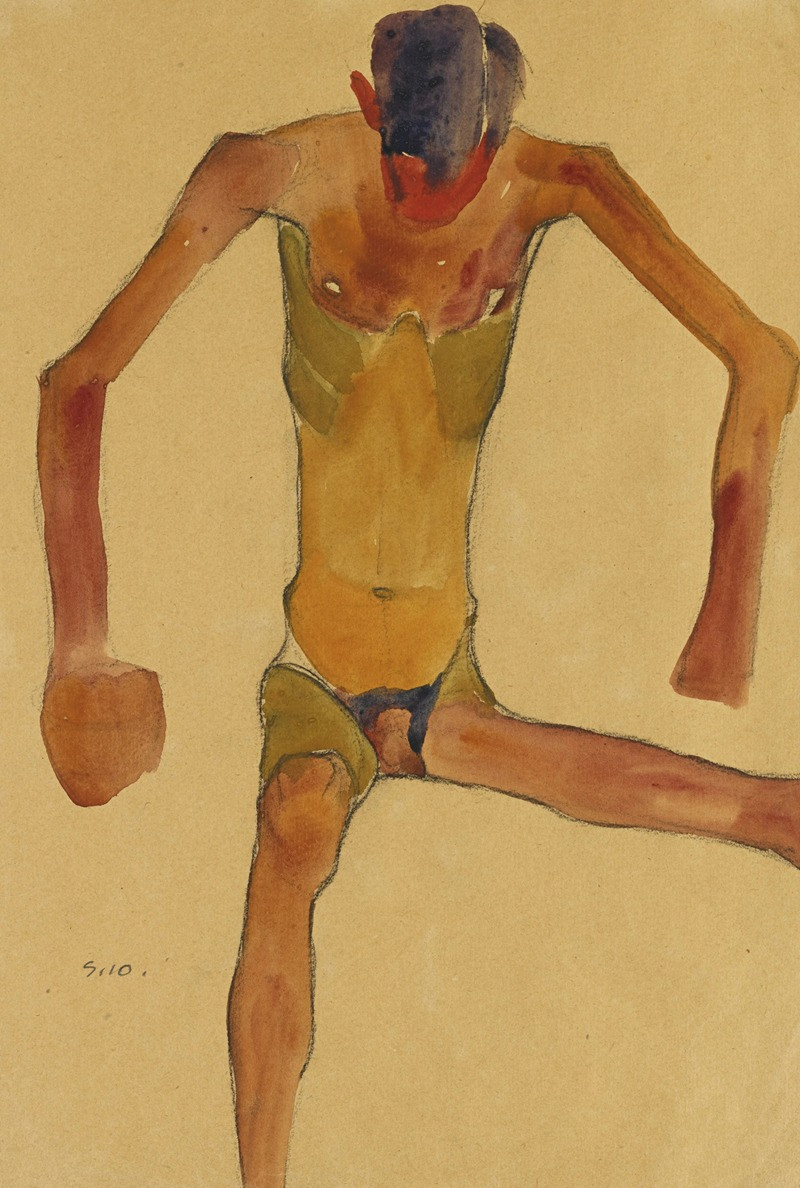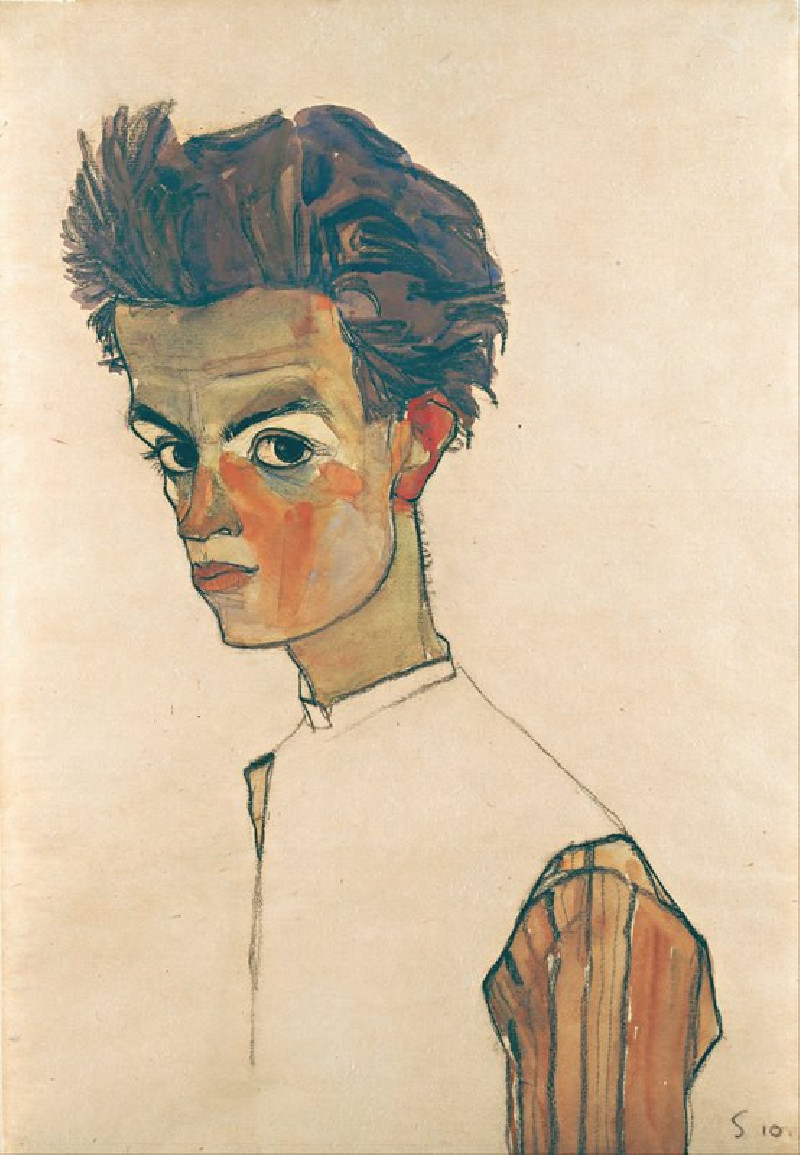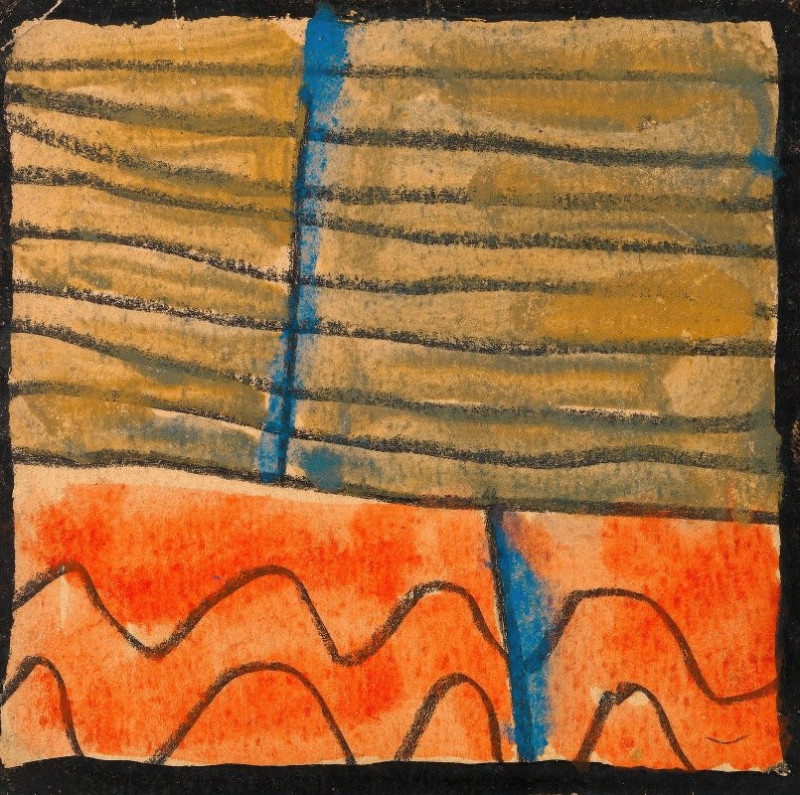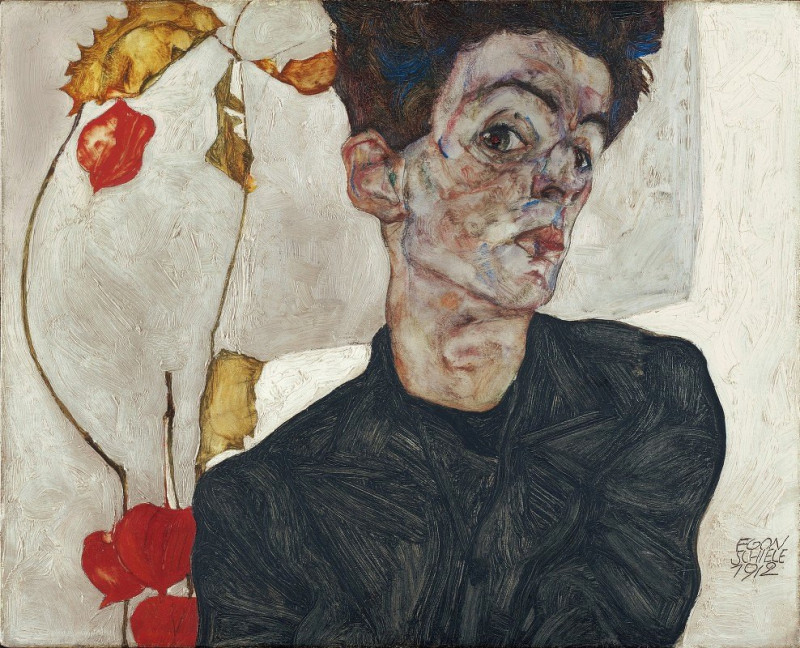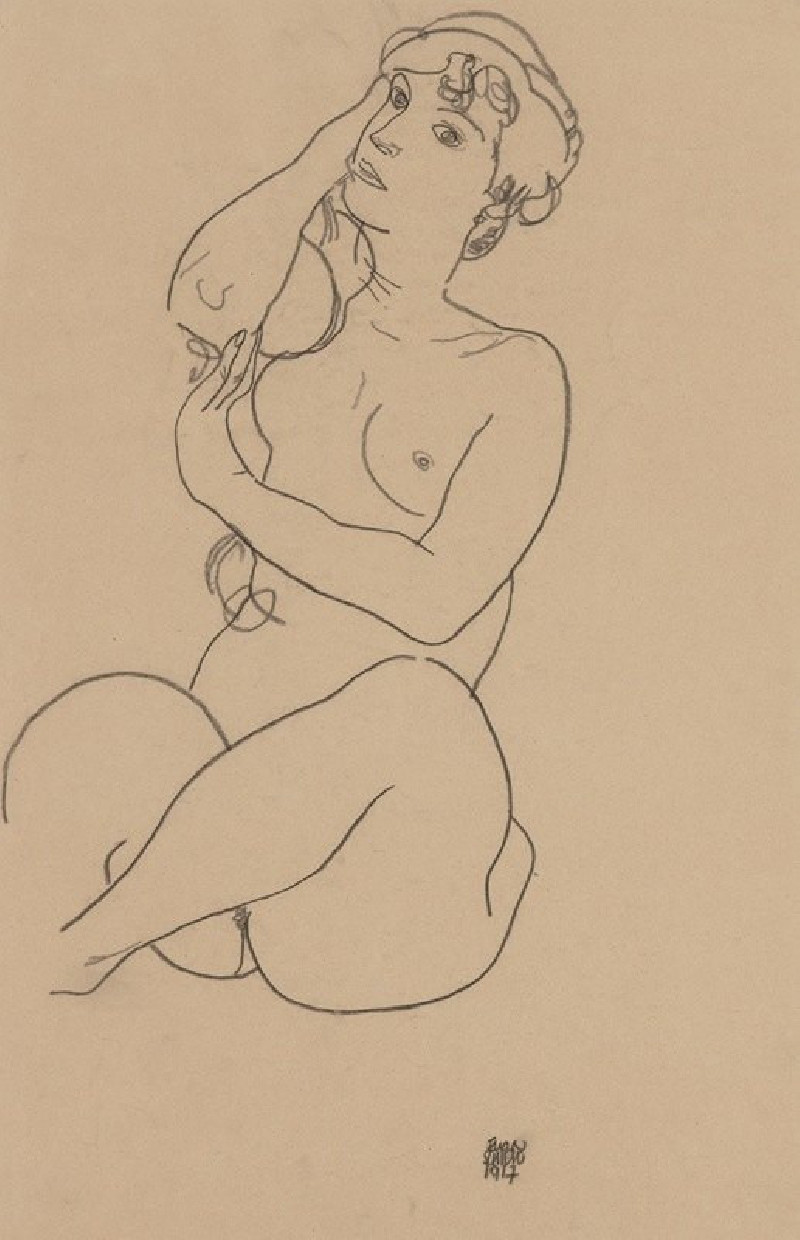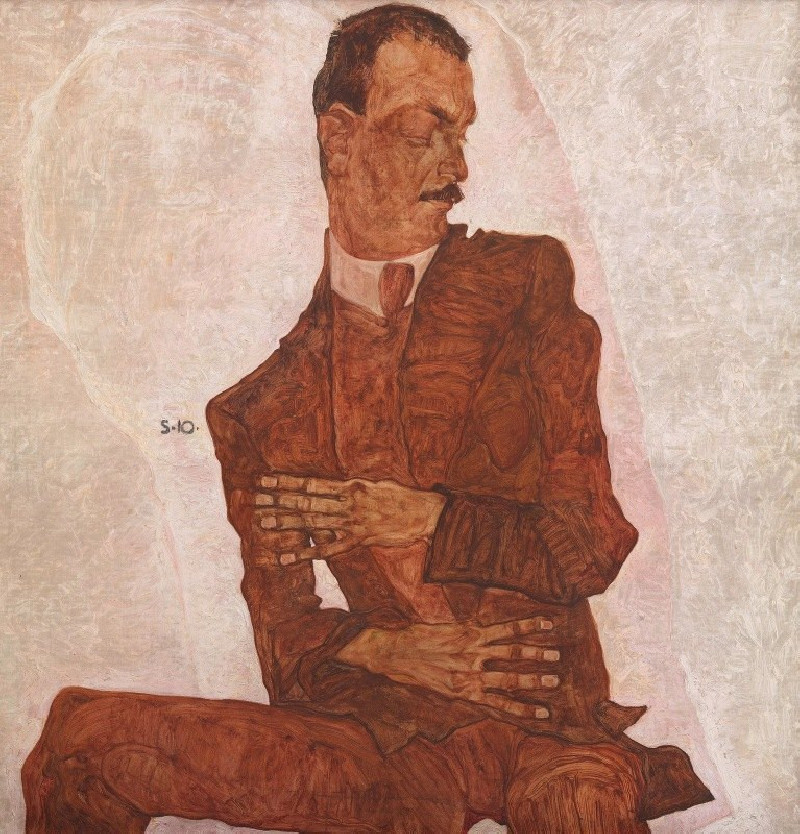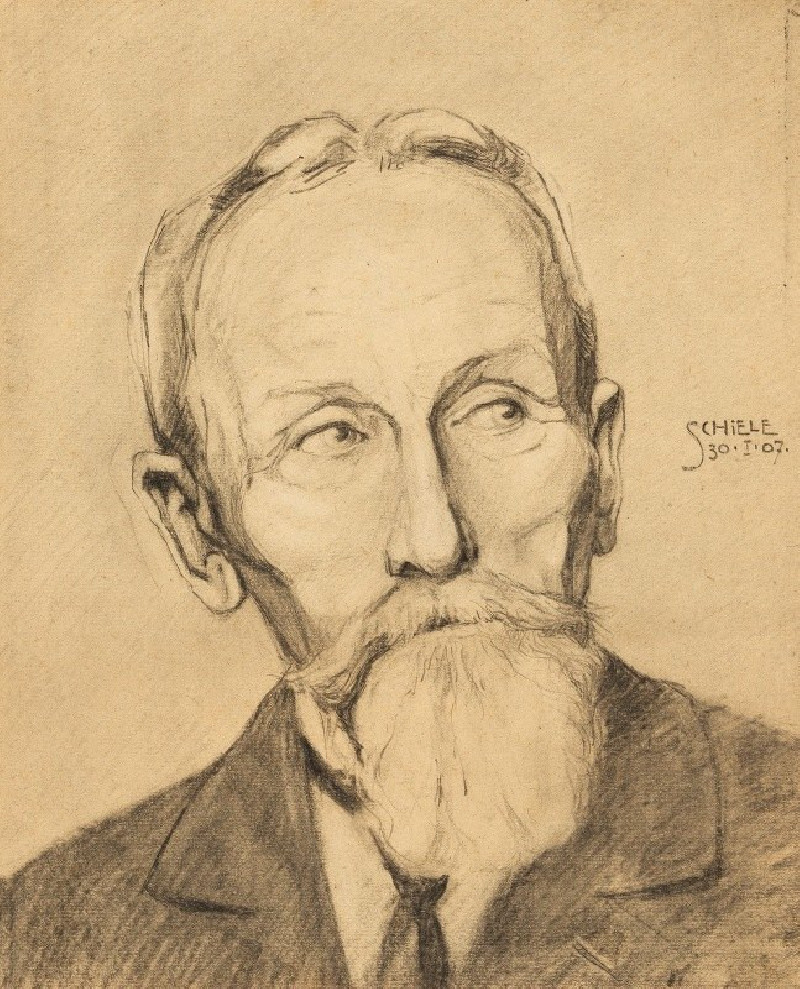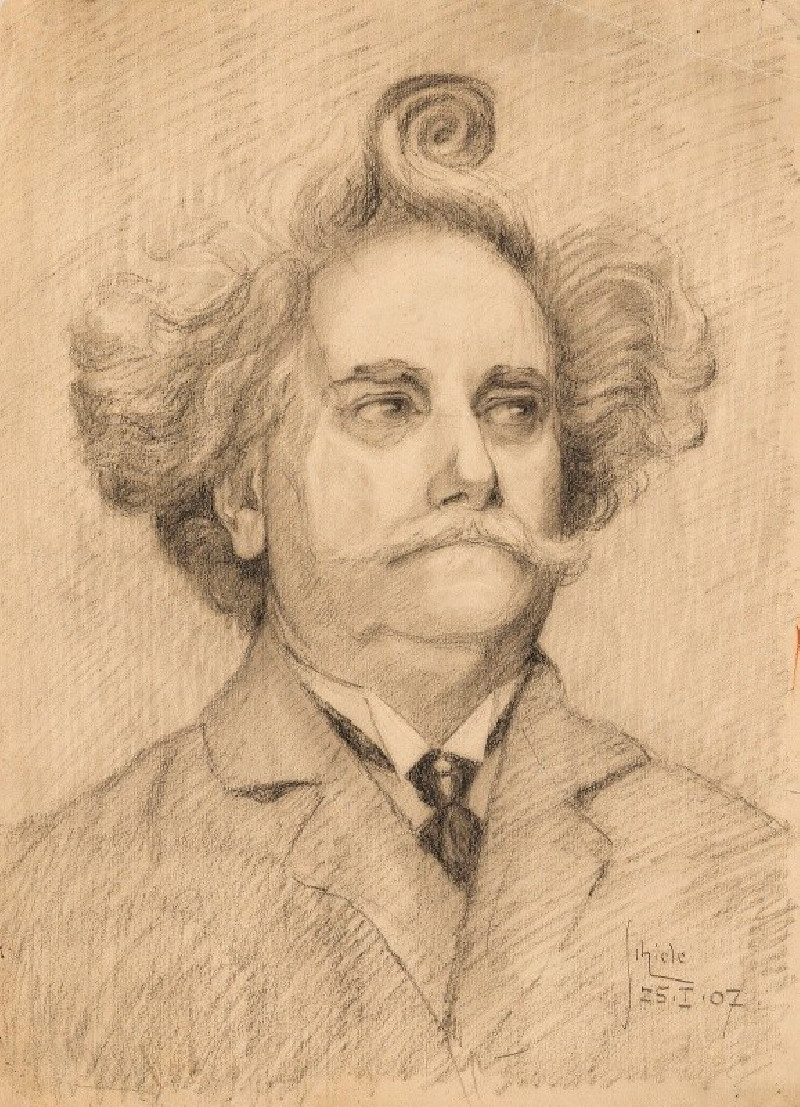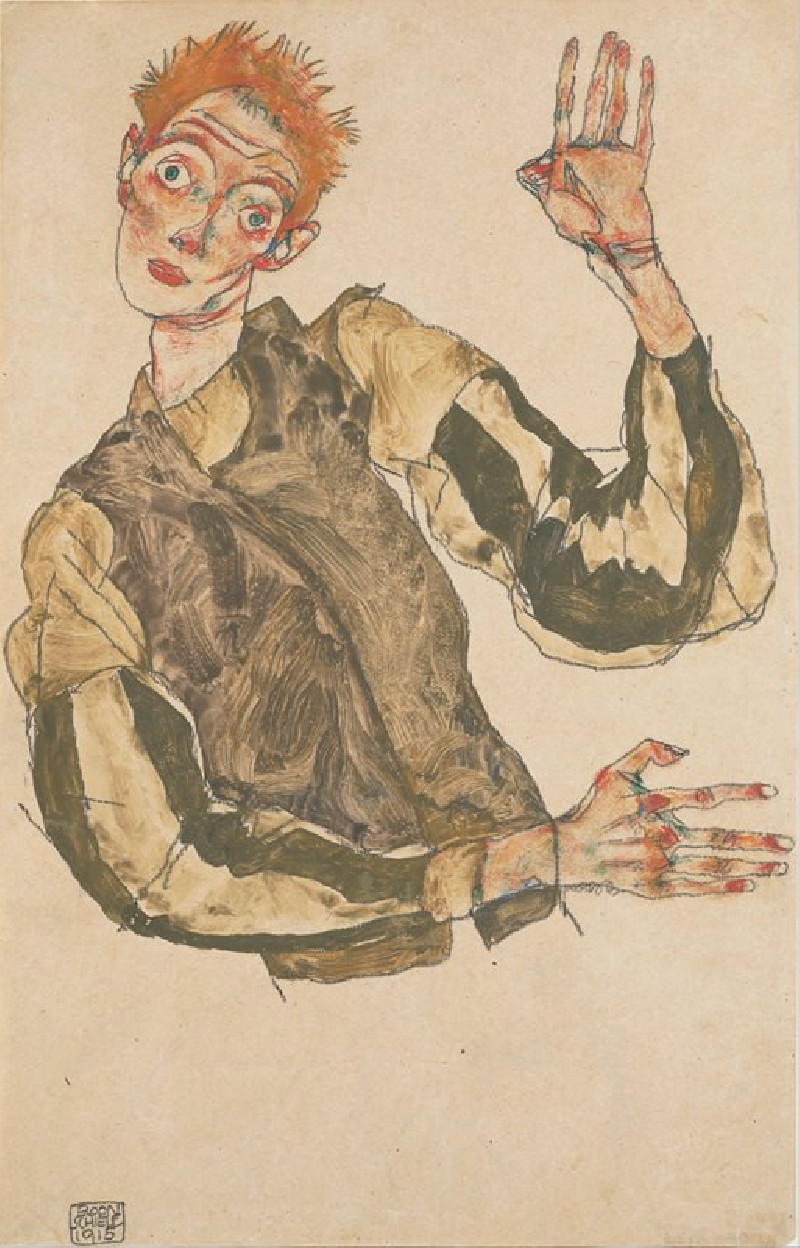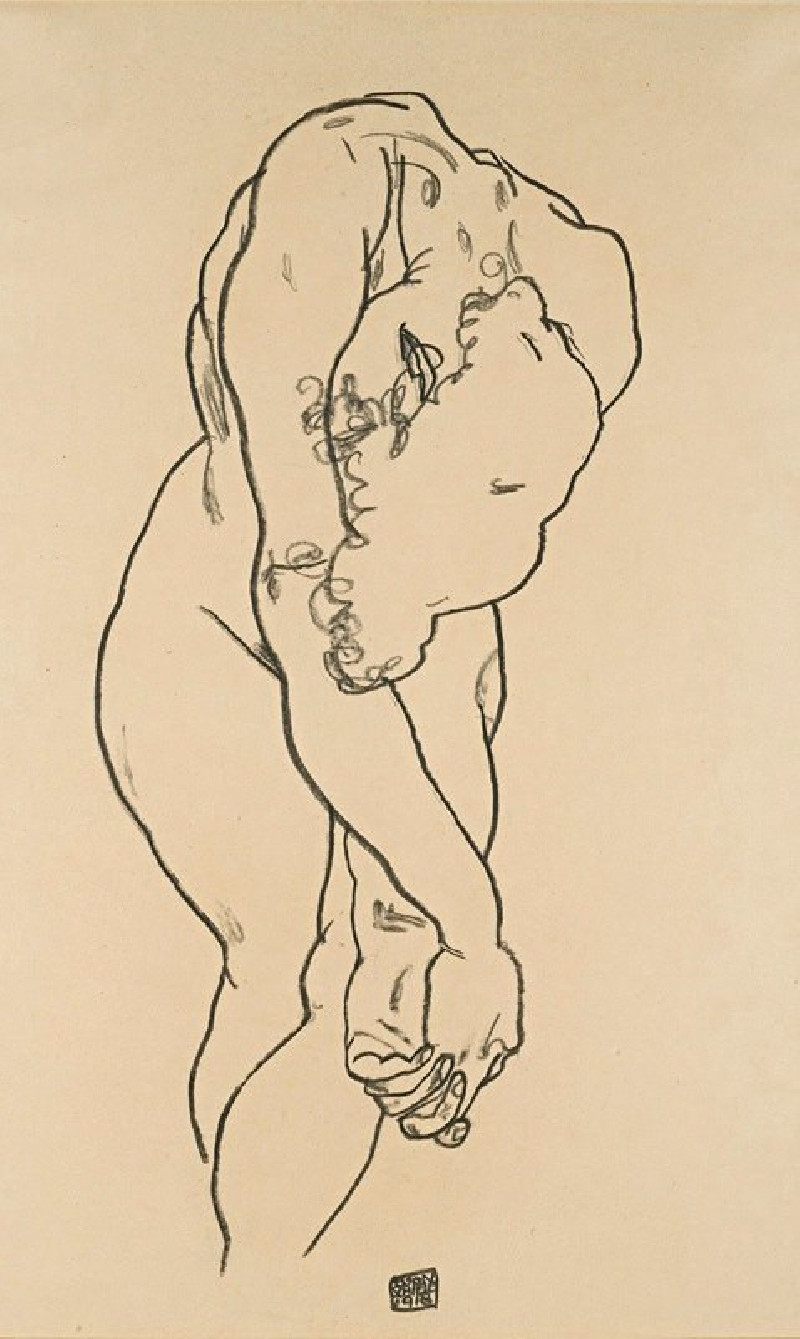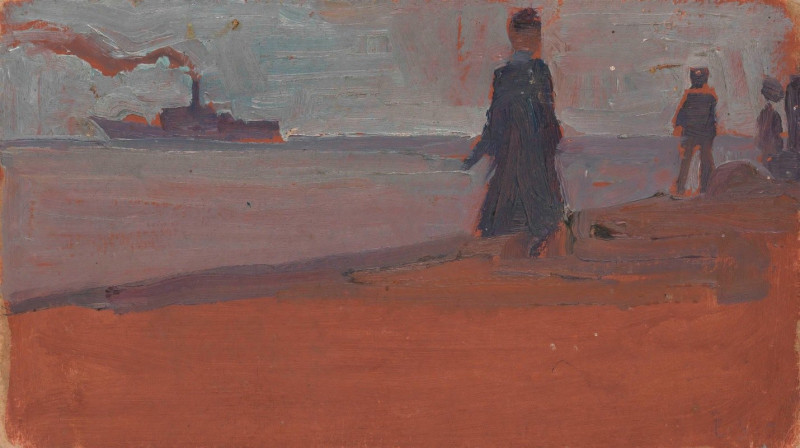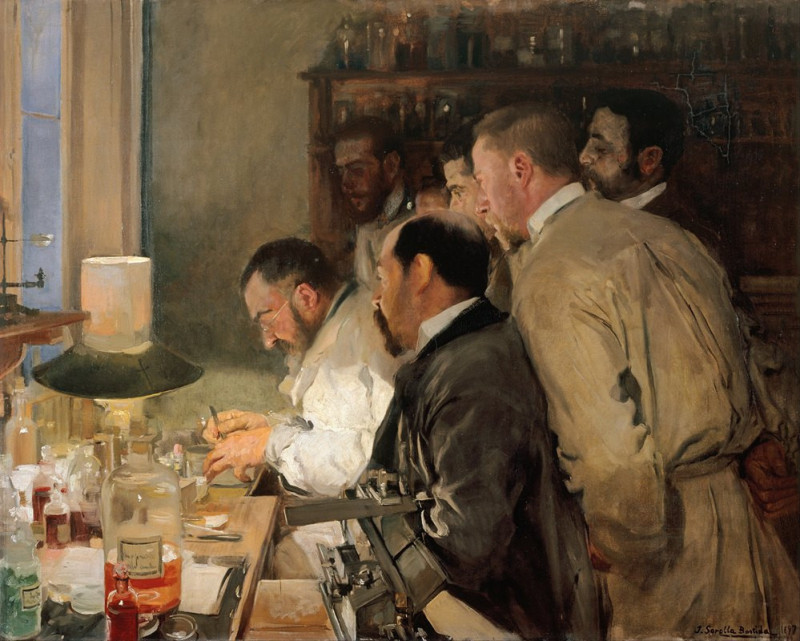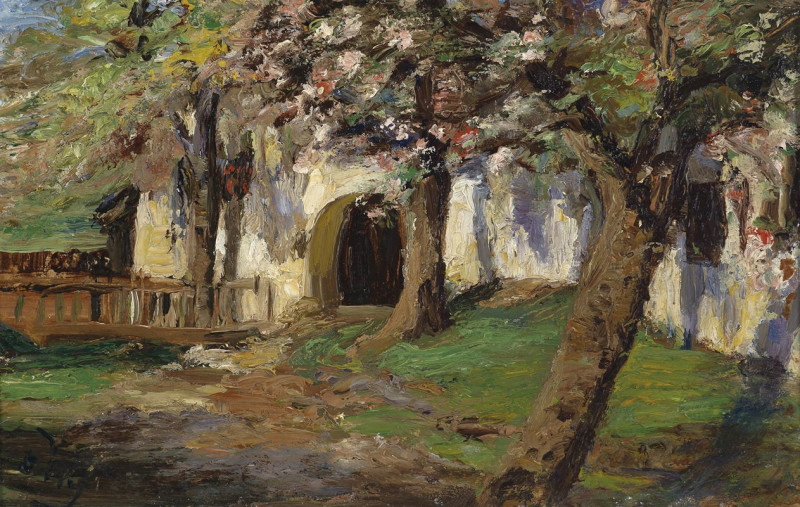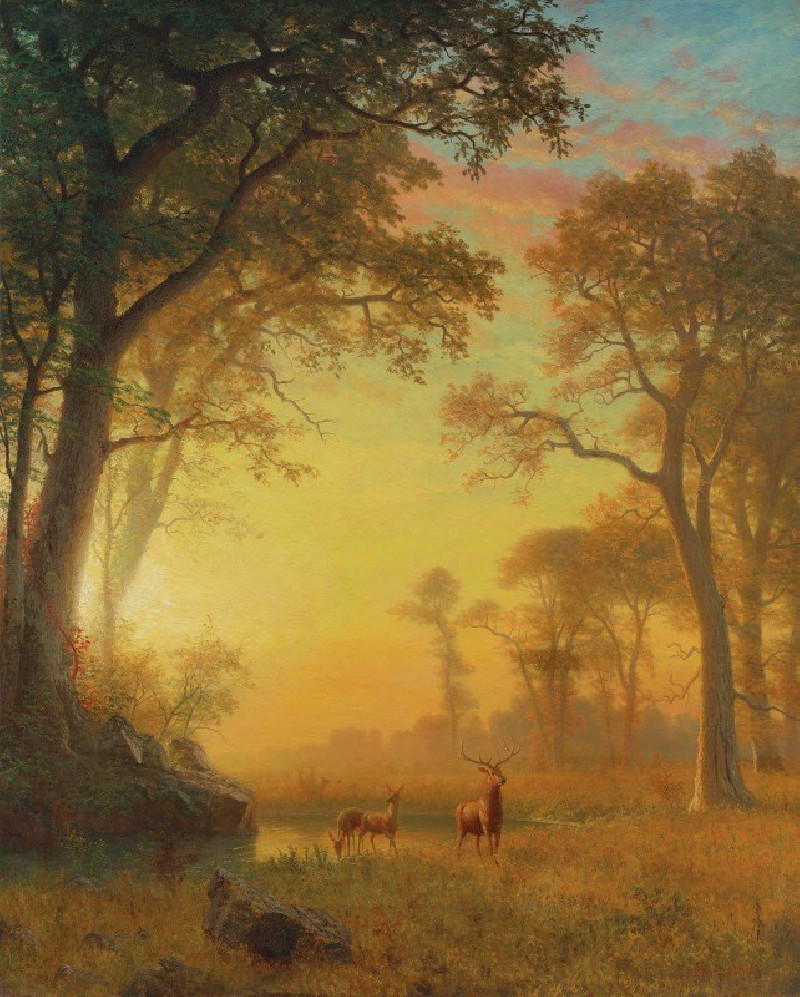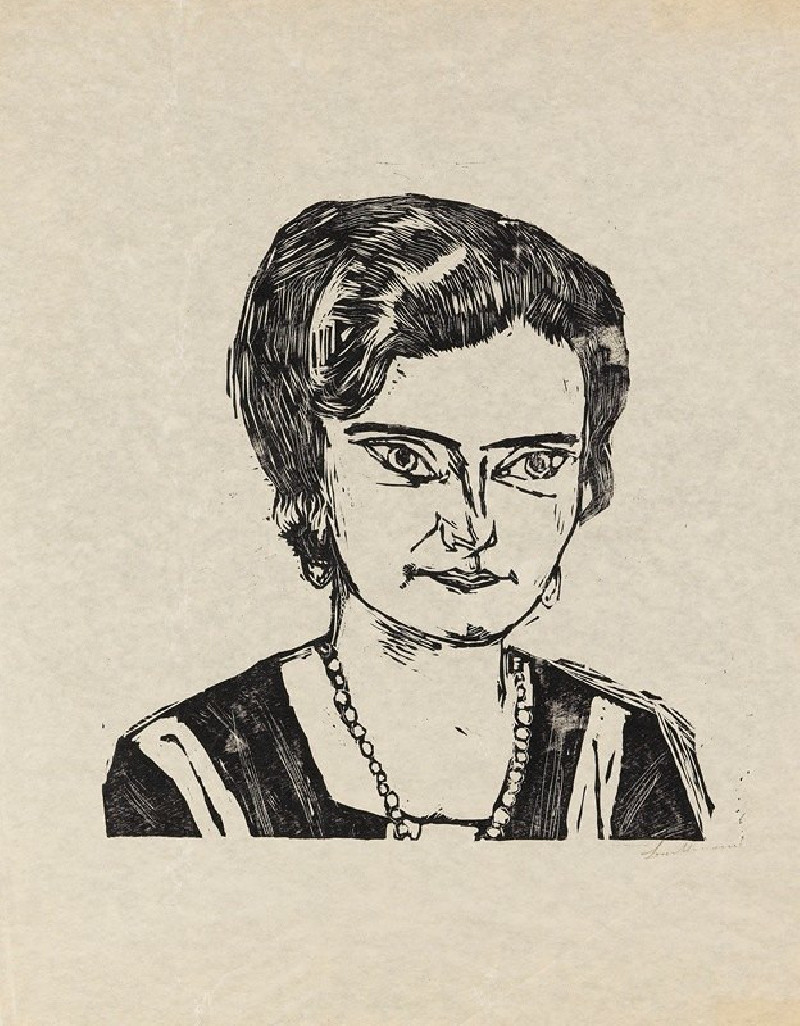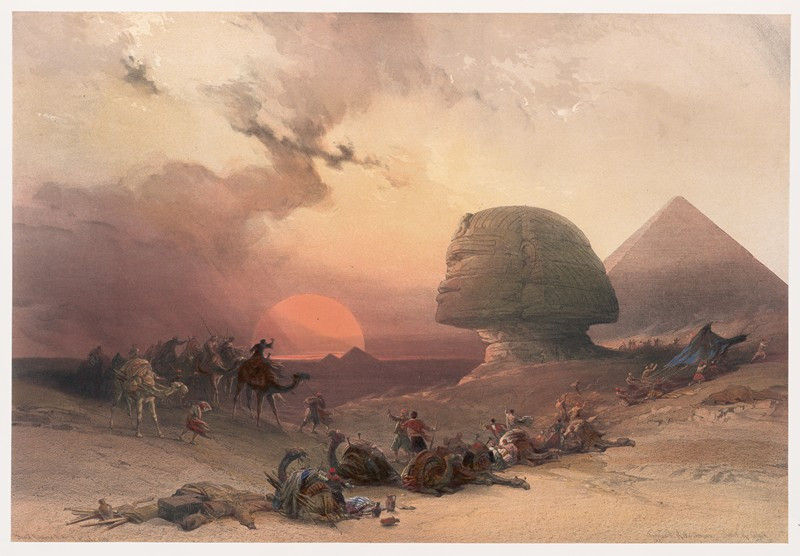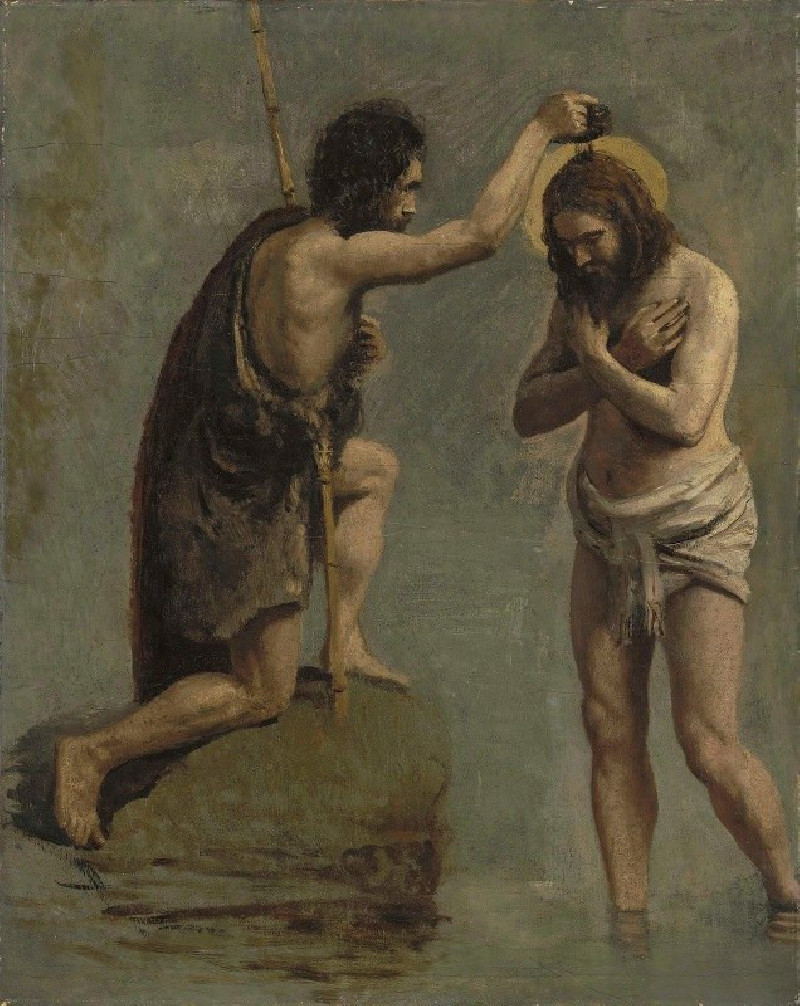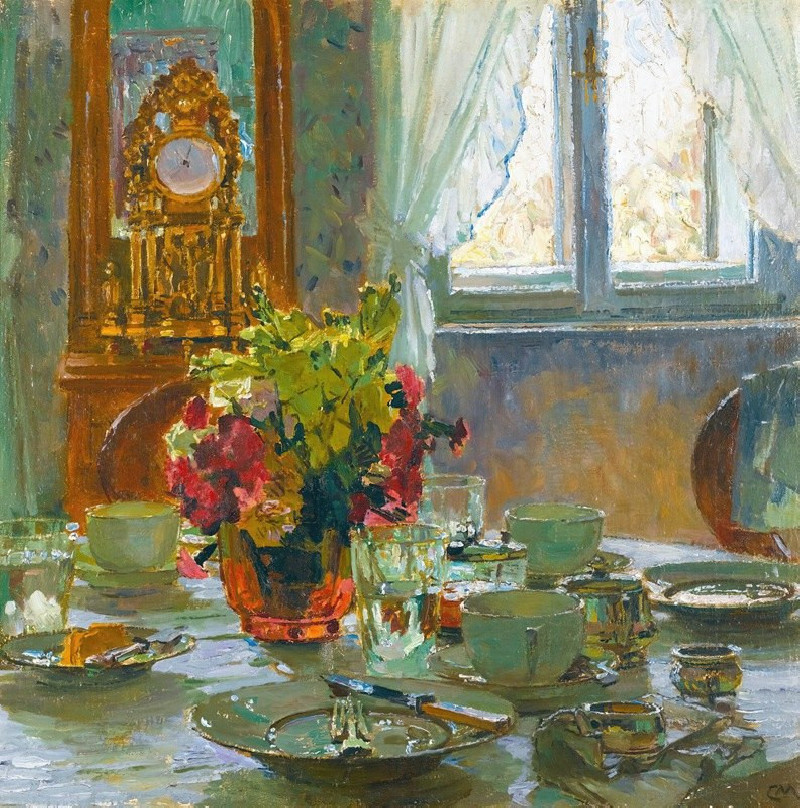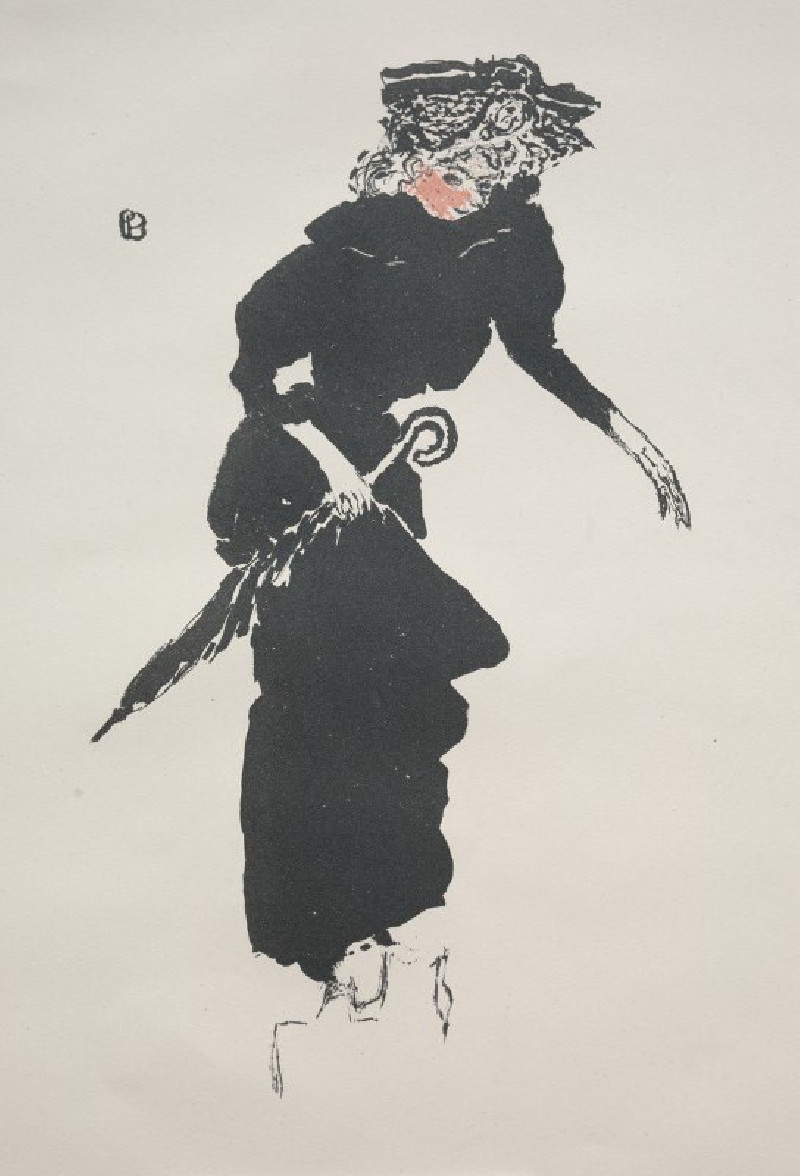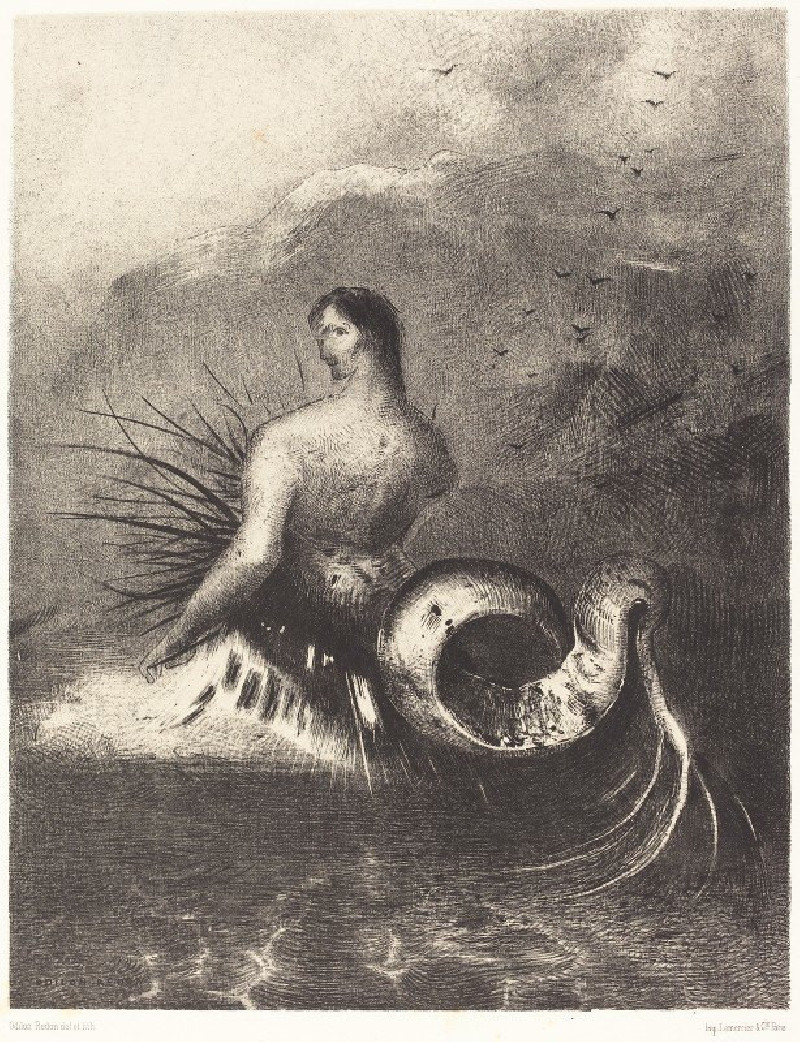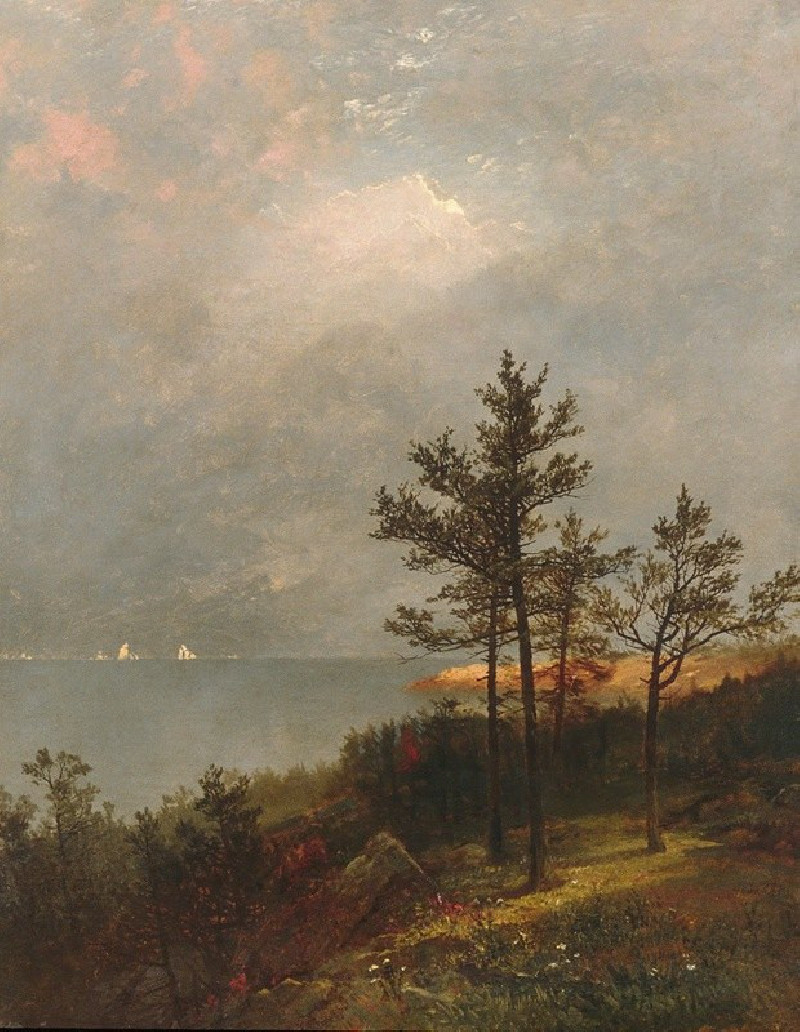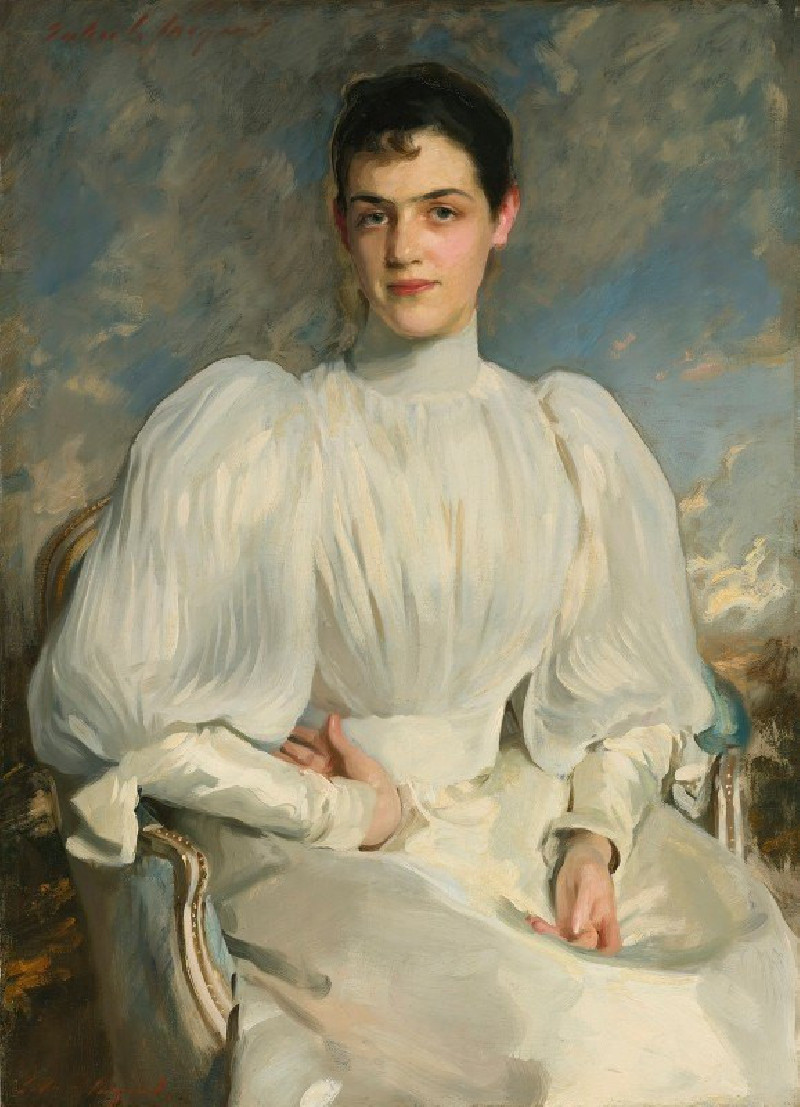Sitzender Weiblicher Akt, mit gegrätschten Beinen (1991)
Technique: Giclée quality print
Recommended by our customers
More about this artwork
The 1991 artwork "Sitzender Weiblicher Akt, mit gegrätschten Beinen" by Egon Schiele captures the audacious spirit and the raw expressiveness characteristic of Schiele's oeuvre. This piece, which roughly translates to "Seated Female Nude, Legs Spread," portrays a female figure in a striking and unapologetic pose that challenges the viewer both emotionally and aesthetically.In this drawing, Schiele employs a minimalistic approach, using simple but assertive lines to outline the form of the woman seated with her legs wide apart. The artwork features sparse detailing, focusing mainly on the contours and the essential features of the body, which enhances the emotional impact of the subject. The woman's slightly tilted head and her piercing gaze engage directly with the viewer, creating an intense and unsettling interaction that is typical of Schiele's work.Egon Schiele, known for his explicit depictions and dramatic body poses, uses the intimacy of the subject to explore themes of vulnerability and raw human emotion. The starkness and simplicity of the medium — pencil on paper — serve to amplify the potent expressiveness perceived in the model's posture and facial expression. This piece reflects Schiele’s relentless pursuit of capturing the psychological depth and the intrinsic truths of human beings."Sitzender Weiblicher Akt, mit gegrätschten Beinen" stands as a brilliant example of how Schiele’s art continues to resonate, offering unflinching explorations of human identity and form.
Delivery
Returns
Egon Schiele was an Austrian painter. A protégé of Gustav Klimt, Schiele was a major figurative painter of the early 20th century. His work is noted for its intensity and its raw sexuality, and the many self-portraits the artist produced, including nude self-portraits. The twisted body shapes and the expressive line that characterize Schiele's paintings and drawings mark the artist as an early exponent of Expressionism.



